Foreign nationals who wish to enter the United States are typically required to obtain a visa, either a nonresident visa for temporary stays or an immigrant visa for permanent residence. A student visa is required to study in the United States. The type of school you intend to attend and your intended course of study determine whether you require an F visa or an M visa.
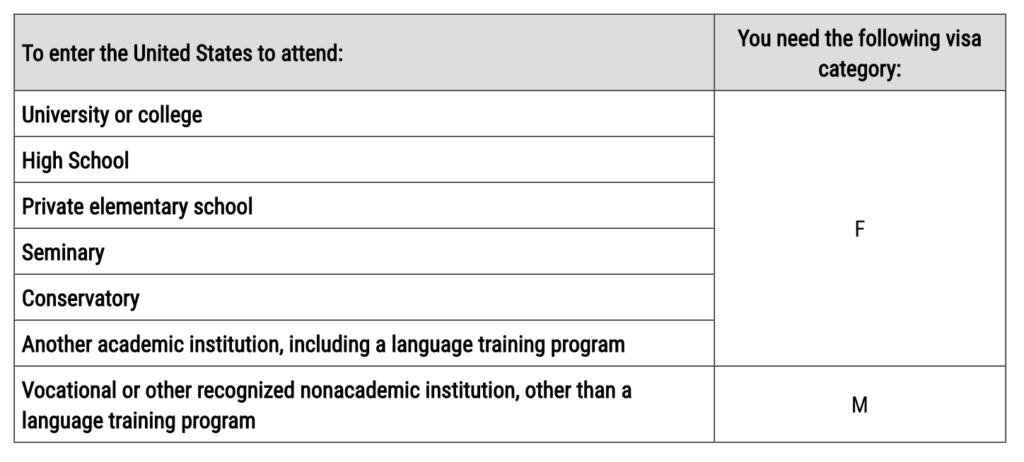
Students cannot travel on the Visa Waiver Program or with Visitor Visas
In order to study in the United States, an F or M student visa is required. Foreign nationals who enter the United States on a visitor (B) visa or through the Visa Waiver Program (VWP) are prohibited from studying, with the exception of recreational study (non-credit) undertaken as part of a tourist visit. For more knowledge on the Visa Waiver Program, please visit Visa Waiver Program.
For short periods of recreational study, a Visitor (B) visa may be appropriate
A visitor (B) visa allows enrollment in a short course of study for recreational purposes but not for a degree or certificate credit. Visit https://travel.state.gov/content/travel/en/us-visas/tourism-visit/visitor.html to learn more about [Visitor Visas].
Short-term study leading to a degree or certificate conferred by the United States is never permitted on a visitor (B) visa. Before entering the United States, a student in a distance learning programme that requires a period of time on the institution’s U.S. campus must obtain a student visa (F or M).
Student Acceptance at a SEVP Approved School
Applying to a SEVP-approved school in the United States is the initial step. After the SEVP-approved school accepts your registration, you will be identified with the Student and Exchange Visitor Information System (SEVIS) and you will be required to pay the SEVIS I-901 fee. The SEVP-approved institution will provide you with Form I-20. After receiving Form I-20 and registering in SEVIS, you may apply for a student (F or M) visa at a U.S. Embassy or Consulate. You are required to present Form I-20 to the consular officer during your visa interview.
If your spouse and/or children plan to live with you in the United States during your studies, they must enrol in SEVIS, obtain Form I-20s from a SEVP-approved school and apply for visas (but they do not pay the SEVIS fee).
Visit the Student and Exchange Visitor Program (SEVP) website of U.S. Immigration and Customs Enforcement (ICE) to learn more about SEVIS and the SEVIS I-901 Fee.
Visit the Department of State’s EducationUSA website to learn about undergraduate and graduate educational opportunities and the application process.
SEVP-certified schools can also be found on the DHS Study in the States school search page.
Types of USA student visa

Documents required for a US student visa
When applying for a student visa to the United States, you will typically need the following:
- A passport valid for at least six months beyond your intended period of stay in the United States (unless exempt by country-specific agreements)
- Acceptance by a SEVP-approved institution and Form I-20 – Payment of the SEVIS application fee –
- Nonimmigrant visa application and Form DS-160 confirmation page
- Your photograph in the format requested, and your number
The following additional documents may be required:
- Academic preparation documents such as transcripts, diplomas, or degrees.
- Proof that you have sufficient funds to cover your living expenses for the duration of your stay in the United States. This may consist of:
- Bank statements
- Financial commitment from a sponsor to cover your housing and living expenses
- A scholarship programme
- Evidence that you will leave the United States upon completion of your studies. This can take the form of a plane ticket from the United States to your home country.
You may also be required to attend a short interview at the embassy or consulate of the United States.
F-1 Student visa
The majority of students who wish to study abroad choose the F-1 Student Visa. There are three essential steps to its procedure:
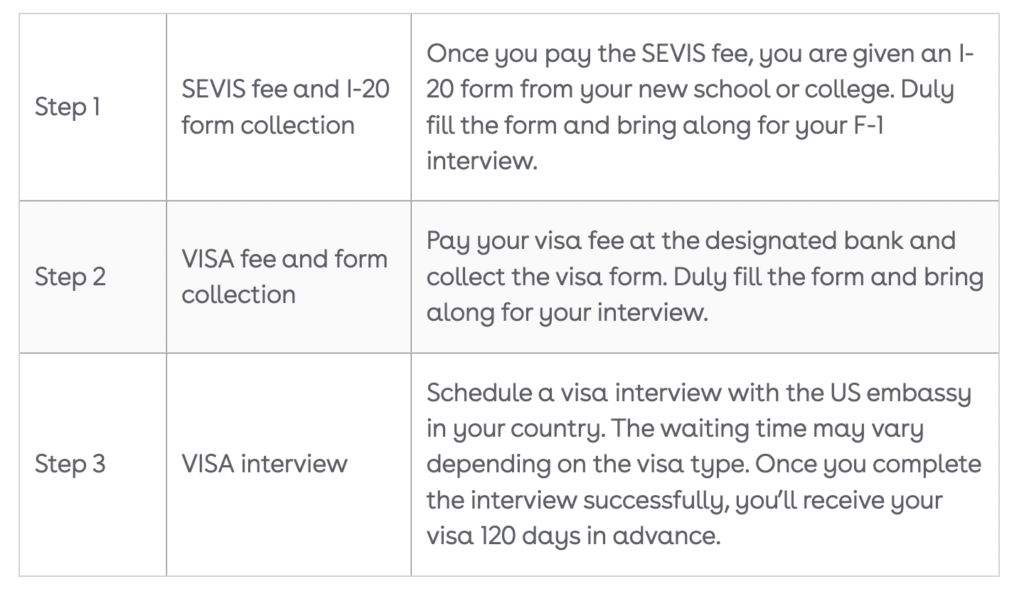
Visa fee
As an applicant from outside the US, you will have to pay US$160 as an application visa fee (do check the latest fee when applying here. There is now a US$350 SEVIS fee on F and M visa applications and US$220 on most of the J Visa applications; this includes the cost of the computer system which is used to record your stay in the United States (SEVIS).
English language requirements
To obtain a student visa for the United States, you must demonstrate English proficiency. Typically, this entails passing a secure English language test to demonstrate your communication and writing skills.
The International English Language Testing System (IELTS) is the world’s most popular high-stakes English language test for study, work and migration, with over three million tests administered in the past year. More than 10,000 organisations, including educational institutions, employers, professional associations and governments, in 140 countries around the world recognise the IELTS results.
Universities and colleges in the United States require a minimum IELTS score of 6.5.
When you first arrive in the US, you must:
- Contact your school’s designated official as soon as possible.
- Contact your assigned school official again no later than your Form I-20 programme start date.
Making sure your visa remains valid
Once you obtain your visa, there are a number of steps you must take to maintain its validity, including:
- Complying with the reason the Department of State issued the visa
- Adhering to the rules associated with that objective
While studying in the US, you will need to observe the following rules:
- You must attend and succeed in every class. Immediately contact your school’s dedicated school official (DSO) if you find your coursework to be too challenging.
- If you believe that you will not be able to complete your programme by the deadline listed on your Form I-20, you must contact your DSO to request a possible programme extension.
- Each term, you must enrol in a full course of study. If you are unable to study full-time, please contact your DSO immediately.
- You cannot slip below a full program of study without the approval of the DSO.
You can always contact us for a free consultation and we will assist you with the entire visa application.
How To Apply
There are multiple steps required to register online. The order and method of completing these steps may vary by U.S. Consulate. Please consult the embassy or consulate’s website for instructions.
Complete the Online Visa Application
- Online Nonimmigrant Passport Application, Form DS-160 – Find out more about filling out the DS-160. 1) You must complete the online passport application and 2) you must print and bring the confirmation page to your interview.
- Photograph – You will upload your photo while completing Form DS-160 online. Your photograph must adhere to the specifications outlined in the Photograph Requirements.
Schedule an Interview
With a few limited exceptions detailed below, visa applicants are generally required to undergo interviews. Visa applicants may be required to undergo an interview with consular officials.

You must make an appointment for your visa interview at the U.S. Embassy or Consulate in your home country. You may schedule your interview at a different U.S. Embassy or Consulate, but it may be more difficult to qualify for a visa if you do so outside of your home country.
The wait times for interview appointments vary by location, season and visa classification, so you should submit your visa application as early as possible. Examine the interview wait time at the location where you intend to apply.
Appointment Wait Time
New Students – Student (F and M) visas may be issued up to 120 days in advance of the start date of a course of study for new students. However, you will not be permitted to enter the United States on your student visa earlier than thirty days prior to the program’s start date.
Continuing Students – Student (F and M) visas may be issued at any time to continuing students who are currently enrolled in SEVIS and a SEVP-approved school or institution.
Before classes begin, continuing students may enter the United States at any time.
Prepare for Your Interview
- Fees – If required, pay the non-refundable passport application fee before your interview. If your visa is confirmed, you may also be required to pay a visa issuance fee, depending on your nationality.
- Review the fee payment instructions posted on the U.S. Embassy or Consulate website where you intend to apply.
Gather Required Documentation
Collect and prepare the following documents prior to your visa interview:
- Passport valid for travel to the United States – Your passport must be valid for at least six months beyond your period of stay in the United States (unless exempt by country-specific agreements). Each individual who needs a visa must submit a separate application, including any family members listed in her passport.
- Nonimmigrant Visa Application, Form DS-160 confirmation page.
- Application fee payment receipt, if you are required to pay before your interview.
- Photo – You will upload your photo while completing the online Form DS-160. If the photo upload fails, you must bring one printed photo in the format explained in the Photograph Requirements.
- Certificate of Eligibility for Nonimmigrant (F-1) Student Status-For Academic and Language Students, Form I-20 or Certificate of Eligibility for Nonimmigrant (M-1) Student Status for Vocational Students, Form I-20 – Your school will send you a Form I-20 once they have entered your information in the SEVIS database. You and your school official must sign Form I-20. All students must be registered in the Student and Exchange Visitor System (SEVIS). Your spouse and/or minor children, if they intend to live in the United States with you, will each receive an individual Form I-20.
Additional Documentation May Be Required
A consular officer will conduct an interview to determine your eligibility for a student visa and may request additional documentation, such as proof of:
- Your academic preparation, including:
- Transcripts, diplomas, degrees, or certificates from schools you attended; and
- Standardized test scores required by your U.S. school; – Your intention to leave the United States upon completion of the course of study and
- How you will cover all educational, living and travel expenses?
Review the visa application instructions on the U.S. Embassy or Consulate website where you intend to apply.
Attend Your Visa Interview
A consular officer will interview you to determine whether you are qualified to receive a student visa. You must establish that you meet the requirements under U.S. law to receive a visa.
Ink-free, digital fingerprint scans are taken as part of the application process. They are usually taken during your interview, but this varies based on location.
After your visa interview, the consular officer may determine that your application requires further administrative processing. The consular officer will inform you if this is required.
After the visa is approved, you may need to pay a visa issuance fee (if applicable to your nationality) and make arrangements for the return of the passport and visa to you. Review the visa processing times to learn more.
Entering the United States
A visa is not a guarantee of admission to the United States. A visa only permits a foreign national to travel to a U.S. port of entry (typically an airport) and request consent to enter the country. Department of Homeland Security (DHS) and U.S. Increased Border Protection (CBP) officials at the port of entry have the authority to allow or deny admission to the United States.
At the port of entry, a CBP official will make this determination after you introduce your passport, visa and Form I-20. The CBP official will provide you with an admission stamp or a paper Form I-94, Arrival or Departure Record, once you have been granted permission to enter the United States.
Under Arrival Procedures for Students or Exchange Visitors on the CBP website, you can learn about the procedures for students (with F or M visas) entering the United States. Consult the CBP website for information on admissions and entry requirements, restrictions on bringing food, agricultural products, and other restricted/prohibited goods and more.
Extending Your Stay
Foreign students with F visas in the United States must leave the country within 60 days of the programme end date listed on their Form I-20, including any authorised practical training.
Foreign students can request an extension through the USCIS website (see the USCIS Extend Your Stay page). On the U.S. Immigration and Customs SEVP website, under the heading Maintaining Your Immigrant Status While a Candidate or Exchange Visitor, is additional information on maintaining student status.
Failure to leave the United States by the required date will result in loss of status. Section 222(g) of the Immigration and Naturalization Act stipulates that visas of individual citizens who are out of status are automatically revoked. Any multiple-entry visa that was revoked for being out of status is invalid for future entry into the United States.
Failure to depart the United States on time could also render you ineligible for future visas. Consult Visa Denials and Ineligibilities and Waivers: Laws for more information.
Change of Status
If your plans change while in the United States (for example, you marry a U.S. citizen or receive an offer of employment), you may be able to request a change in your nonimmigrant status to another category through U.S. Citizenship and Immigration Services (USCIS). See Change My Nonimmigrant Status on the USCIS website to learn more.
While you are in the United States, receiving a change of status from USCIS does not require you to apply for a new visa. However, once you depart the United States, you must apply for a new visa at a U.S. Embassy or Consulate in the appropriate category for your travel.
Additional Information
- There is no assurance that a visa will be issued. Do not make final travel arrangements or purchase tickets before obtaining a visa.
- Review Students and Employment and Form I-765 Work Authorization Instructions on the USCIS website for details about having to work in the United States during your studies.
- View the information on the SEVP website under Do Students Returning from Provisional Absences Need New Visas? if you have a temporary break in your studies. Consult with your school’s Designated School Officials if your study visa is still valid but you are outside of the United States.
- spouse and offspring
- Your spouse and unmarried minor children may apply for F-2 or M-2 visas if they intend to reside with you during your studies. Although SEVIS fees are not required, your institution must provide each student with a Form I-20, which is needed to apply for a visa. You must submit a copy of your F-1 or M-1 visa as well as evidence of your relationship.
- Your minor children may join the school in the United States while travelling with you.
- U.S. Embassies and Consulates will adjudicate passport applications for same-sex spouses similarly to applications for spouses of the opposite gender.
- A valid U.S. visa in a passport that has expired remains valid. A visa is valid until its expiration unless cancelled or revoked. If your expired passport contains a valid visa, do not delete it from your old passport. You may use a valid visa in an expired passport in conjunction with a new foreign passport to travel to and enter the United States.
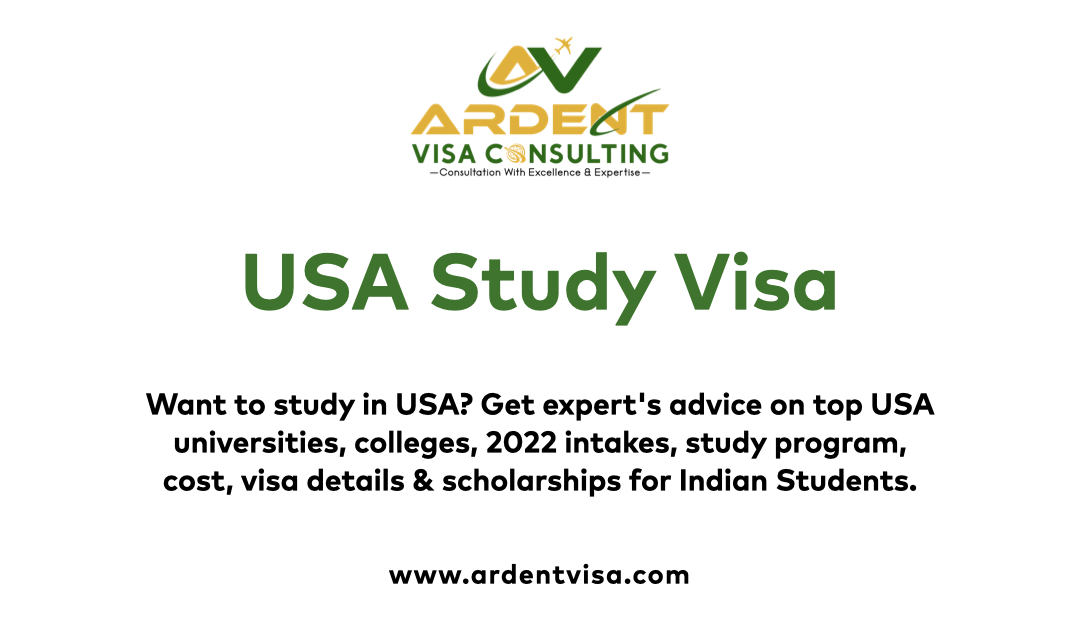
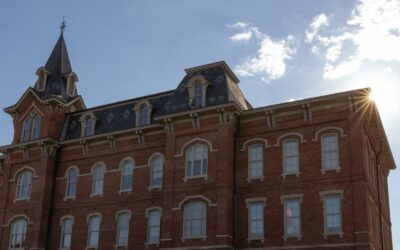

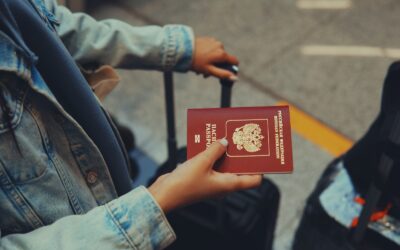
0 Comments